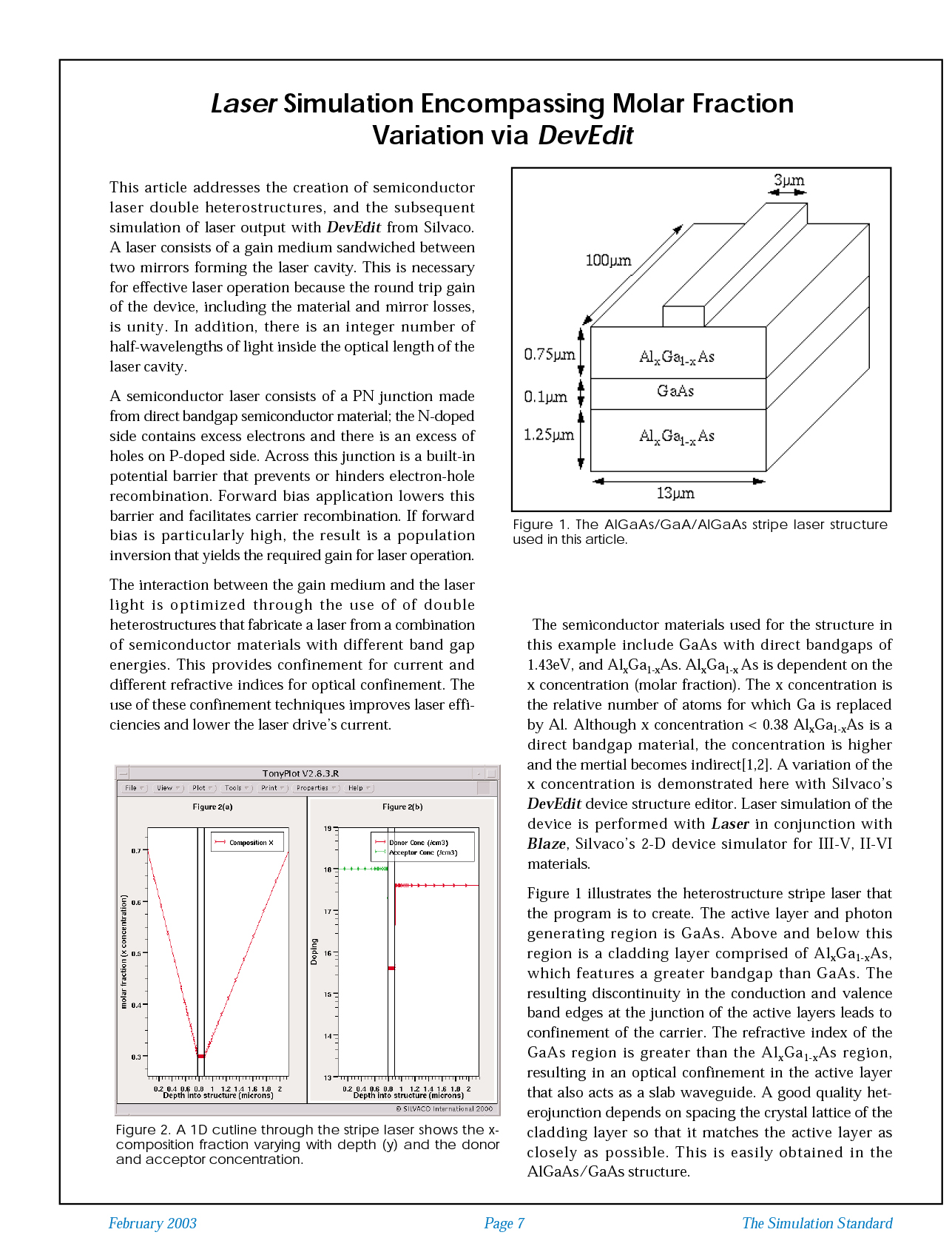Laser Simulation Encompassing Molar Fraction Variation via DevEdit
Introduction
This article addresses the creation of semiconductor laser double heterostructures, and the subsequent simulation of laser output with DevEdit from Silvaco. A laser consists of a gain medium sandwiched between two mirrors forming the laser cavity. This is necessary for effective laser operation because the round trip gain of the device, including the material and mirror losses, is unity. In addition, there is an integer number of half-wavelengths of light inside the optical length of the laser cavity.
A semiconductor laser consists of a PN junction made from direct bandgap semiconductor material; the N-doped side contains excess electrons and there is an excess of holes on P-doped side. Across this junction is a built-in potential barrier that prevents or hinders electron-hole recombination. Forward bias application lowers this barrier and facilitates carrier recombination. If forward bias is particularly high, the result is a population inversion that yields the required gain for laser operation.
The interaction between the gain medium and the laser light is optimized through the use of of double heterostructures that fabricate a laser from a combination of semiconductor materials with different band gap energies. This provides confinement for current and different refractive indices for optical confinement. The use of these confinement techniques improves laser efficiencies and lower the laser drive’s current.
The semiconductor materials used for the structure in this example include GaAs with direct bandgaps of 1.43eV, and AlxGa1-xAs. AlxGa1-x As is dependent on the x concentration (molar fraction). The x concentration is the relative number of atoms for which Ga is replaced by Al. Although x concentration < 0.38 AlxGa1-xAs. AlxGa1-x is a direct bandgap material, the concentration is higher and the mertial becomes indirect[1,2]. A variation of the x concentration is demonstrated here with Silvaco’s DevEdit device structure editor. Laser simulation of the device is performed with Laser in conjunction with Blaze, Silvaco’s 2-D device simulator for III-V, II-VI materials.



